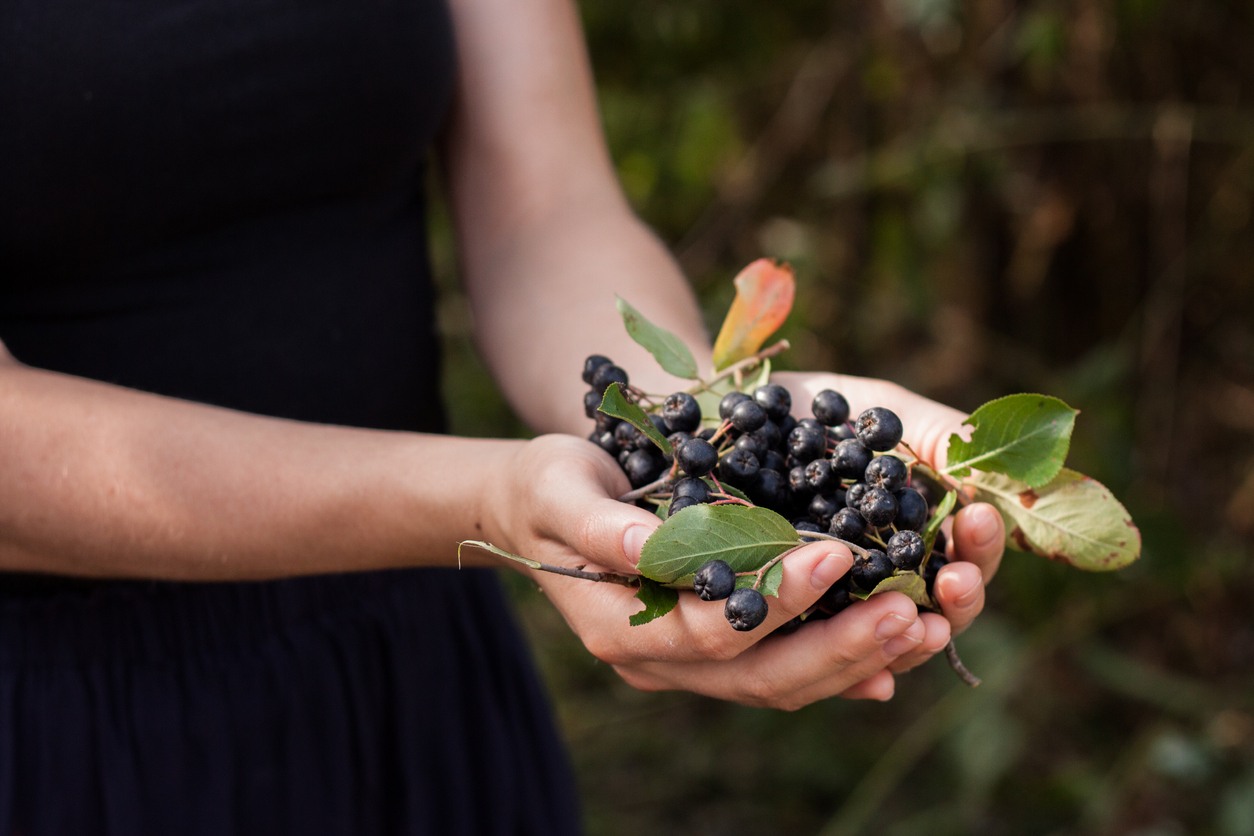Foraging for wild berries can be a delightful experience, offering a taste of nature’s bounty and a connection to the landscape around you. However, it’s crucial to know which berries are safe to eat and which ones are best left alone. This guide explores 10 tasty wild berries you can enjoy and 8 poisonous ones you should avoid, ensuring a safe and enjoyable foraging adventure.
Tasty Wild Berries to Try
Blackberries (Rubus spp.)
Description
Blackberries are aggregate fruits from various species in the Rubus genus, known for their soft body, deep black color, and sweet flavor.
Habitat
Common in woods, hedgerows, and scrublands across North America and Europe.
Uses
Delicious both fresh and in jams, pies, and desserts.
Blueberries (Vaccinium spp.)
Description
True blueberries are small, round, and have a sweet, mildly tart flavor, with a color ranging from blue to purple.
Habitat
Found in forested or bushy areas, particularly in acidic soil throughout the Northern Hemisphere.
Uses
Perfect for fresh eating, in pancakes, and preserves.
Raspberries (Rubus idaeus)
Description
Raspberries are soft, sweet, and slightly tart, ranging in color from red to black.
Habitat
Common in forests and clearings; they prefer damp climates.
Uses
Excellent in desserts, jams, or eaten fresh.
Strawberries (Fragaria spp.)
Description
Wild strawberries are smaller than their cultivated counterparts but are much sweeter and more flavorful.
Habitat
Typically found in open meadows and woodland edges across North America and Europe.
Uses
Great for fresh eating, desserts, and salads.
Elderberries (Sambucus nigra)
Description
Small, dark berries that are usually cooked to improve flavor and remove toxicity from their raw form.
Habitat
Common in both North America and Europe, particularly in wet areas along roadsides and rivers.
Uses
Widely used in syrups, wines, and jams.
Mulberries (Morus spp.)
Description
These berries resemble elongated blackberries and have a sweet, slightly tart flavor.
Habitat
Found in warm, temperate, and subtropical regions of Asia, Africa, and the Americas.
Uses
Can be eaten raw, dried, or used in baking.
Cloudberries (Rubus chamaemorus)
Description
Soft, amber-colored berries with a unique tart taste.
Habitat
Boggy areas in the Arctic and subarctic zones, as well as boreal forests.
Uses
Popular in jams, desserts, and liqueurs in Nordic countries.
Huckleberries (Vaccinium parvifolium)
Description
Similar to blueberries but with a distinctively sweet and tart flavor.
Habitat
Prefers acidic soils in the mountainous regions, forests, and heathlands of North America.
Uses
Excellent in baked goods, jams, and jellies.
Salmonberries (Rubus spectabilis)
Description
Bright orange or red berries that are both sweet and tart.
Habitat
Common in moist forests and stream margins in the Pacific Northwest.
Uses
Eaten fresh or used to make jams and pies.
Cranberries (Vaccinium macrocarpon)
Description
Small, hard, and tart, these berries are often sweetened and cooked before eating.
Habitat
Found in acidic bogs throughout the cooler regions of the northern hemisphere.
Uses
Popular in juice, sauce, and dried form.
Poisonous Wild Berries to Avoid
Deadly Nightshade (Atropa belladonna)
Description
Features shiny black berries that can be fatal if ingested.
Signs of Poisoning
Includes dilated pupils, sensitivity to light, blurred vision, tachycardia, loss of balance, convulsions, and eventually death.
Pokeweed (Phytolacca americana)
Description
Has dark purple-black berries; all parts of the plant, especially roots, are highly toxic.
Signs of Poisoning
Severe stomach cramping, nausea, vomiting, diarrhea, difficulty controlling urination, and low blood pressure.
European Bittersweet (Solanum dulcamara)
Description
Produces bright red berries that can cause significant toxicity.
Signs of Poisoning
Includes gastrointestinal distress, slowed heart rate, and in severe cases, respiratory failure.
Holly (Ilex spp.)
Description
These trees or shrubs bear red berries, which are toxic to humans.
Signs of Poisoning
Nausea, vomiting, diarrhea, and drowsiness.
Yew (Taxus spp.)
Description
Although the flesh of the berry itself is not poisonous, the seeds contained within are highly toxic.
Signs of Poisoning
Can cause sudden heart failure and death.
Mistletoe (Viscum album)
Description
Has white or slightly yellow berries that are toxic.
Signs of Poisoning
Gastrointestinal problems, cardiovascular collapse, and even death in severe cases.
Jerusalem Cherry (Solanum pseudocapsicum)
Description
Produces bright red or orange berries that contain solanine, a poisonous substance.
Signs of Poisoning
Gastrointestinal distress, hallucinations, paralysis, and rarely death.
Manchineel (Hippomane mancinella)
Description
Known as the “little apple of death,” this is one of the most toxic trees in the world with its fruit.
Signs of Poisoning
Severe burning and irritation of the mouth and throat, abdominal pain, shock, and potentially death.
FAQs about Wild Berries
How can I safely identify edible wild berries?
Always use a reliable field guide specific to your region, consider taking a guided foraging tour, and if in doubt, do not eat the berry.
What should I do if I think I’ve eaten a poisonous berry?
Seek immediate medical attention. If possible, save a sample of the berry for identification.
Can you eat raw wild berries?
Yes, many wild berries are delicious raw but ensure they are properly identified and cleaned before consumption.
Are wild berries more nutritious than store-bought?
Wild berries often contain higher levels of certain antioxidants and nutrients due to their natural growth conditions and the absence of cultivation.
How should wild berries be prepared?
They can be eaten raw, cooked, or made into jams, jellies, and pies. Some, like elderberries, should be cooked to eliminate toxins.
What’s the best time of year to forage for berries?
It varies by region and species, but generally, late summer to early fall is the peak season for many wild berries.
Are there any ethical considerations when foraging for wild berries?
Yes, always forage responsibly. Take only what you need, leave plenty for wildlife, and be aware of local regulations regarding foraging.
- Comprehensive Review Top CBD Gummies By FabCBD - April 24, 2024
- Indulge in Delta 8 Bliss: A Fun-Filled Guide to Just Delta’s Products! - April 24, 2024
- 10 Tasty Wild Berries to Try (and 8 Poisonous Ones to Avoid) - April 15, 2024




